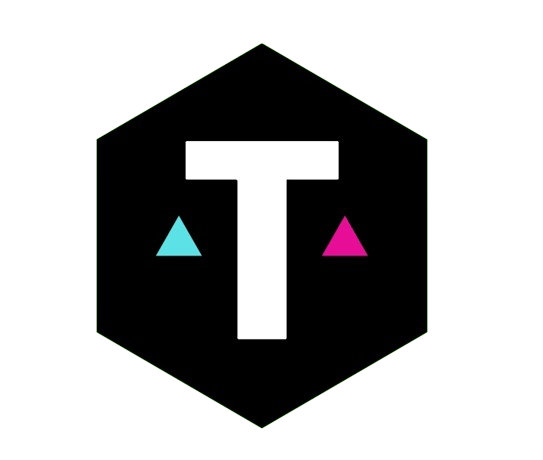Future-Proofing Your Business: The Power of ISSB Sustainability Reporting in Singapore

The business landscape is shifting. Rapidly.
Gone are the days when sustainability was just a side note in annual reports. Today, it’s a critical part of business strategy, risk management, and investor relations.
In Singapore, the adoption of International Sustainability Standards Board (ISSB) reporting frameworks isn’t just about compliance—it’s a roadmap to long-term resilience and growth.
Sustainability reporting is no longer a luxury. It’s a necessity.
And companies that fail to recognize this shift risk falling behind in an economy that increasingly values environmental, social, and governance (ESG) transparency.
So, what does this mean for your business?
It means that future-proofing your company starts with understanding and integrating ISSB standards into your reporting framework.
This article will break down why ISSB standards are essential, how they align with Singapore’s sustainability goals, and what practical steps businesses need to take to stay ahead.
Let’s dive in.
Chapter 1: The ISSB Revolution—A Game Changer for Global Business
What is ISSB?
The International Sustainability Standards Board (ISSB) was established to create a single, global framework for sustainability disclosures.
Before ISSB, businesses struggled with multiple reporting standards—GRI, SASB, TCFD, and others—creating confusion and inconsistency.
ISSB changes that.
By setting a unified standard, ISSB ensures that businesses worldwide report sustainability data in a way that is transparent, comparable, and decision-useful for investors.
The Shift Toward ISSB in Singapore
Singapore has long been a leader in sustainable finance and corporate governance.
The Monetary Authority of Singapore (MAS) and Singapore Exchange (SGX) have actively pushed for better climate disclosures, aligning with global best practices.
By integrating ISSB standards, Singapore ensures that businesses operate at the highest levels of ESG accountability.
For businesses, this is not just about regulatory compliance. It’s about positioning themselves as leaders in an evolving global economy.
Chapter 2: Why ISSB Standards Are the Future of Business in Singapore
1. Enhancing Investor Confidence
Investors don’t just look at profits anymore. They want to know how companies manage climate risks, carbon footprints, and long-term sustainability.
ISSB standards provide the transparency that institutional investors, banks, and funds demand.
A business that aligns with ISSB isn’t just compliant—it’s investment-ready.
2. Strengthening Competitive Advantage
Sustainability isn’t a cost. It’s a competitive edge.
Companies that embrace ISSB standards will have stronger brand reputations, better risk management, and greater access to green finance.
While competitors scramble to adapt to new ESG regulations, early adopters will already be reaping the benefits.
3. Risk Management in a Changing Climate
Singapore is highly vulnerable to climate change, rising sea levels, and extreme weather events.
Businesses must prepare for regulatory shifts, carbon taxes, and stricter environmental laws.
ISSB reporting helps companies identify, measure, and mitigate these risks before they become existential threats.
4. Aligning with Global Trade and Finance Standards
Companies that fail to meet global sustainability standards will find it harder to secure funding, attract foreign investment, and expand internationally.
As Singapore integrates ISSB into its regulatory framework, companies that ignore these standards will find themselves at a disadvantage.
Sustainability isn’t a regulatory burden. It’s a business strategy.
Chapter 3: Breaking Down ISSB Standards—What You Need to Know
Core Components of ISSB Reporting
- Climate-Related Disclosures (TCFD-aligned)
- Identify climate-related risks and opportunities.
- Measure greenhouse gas (GHG) emissions (Scope 1, 2, and eventually Scope 3).
- Set science-based targets for emission reduction.
- Sustainability-Related Financial Disclosures
- Detail how sustainability factors impact financial performance.
- Disclose sustainability-linked business risks and mitigation strategies.
- Governance & Oversight
- Outline board responsibilities in overseeing ESG risks.
- Show how sustainability goals integrate into corporate strategy.
- Stakeholder Engagement & Materiality
- Identify key ESG topics relevant to business operations.
- Engage with investors, customers, and communities on sustainability priorities.
By following ISSB standards, companies can create sustainability reports that are transparent, actionable, and globally recognized.
Chapter 4: How Singapore Businesses Can Align with ISSB Standards
Step 1: Conduct an ESG Materiality Assessment
Start by identifying the sustainability issues that truly impact your business.
- What ESG risks affect your industry?
- Where do investors expect more transparency?
- How does climate change impact your supply chain?
Use data-driven analysis to define material sustainability factors that matter most.
Step 2: Implement Climate Risk and Carbon Accounting Systems
- Measure direct (Scope 1) and indirect (Scope 2) emissions.
- Set up tracking systems for energy use, waste management, and water consumption.
- Prepare for future Scope 3 emissions reporting (supply chain emissions).
Step 3: Develop a Clear ESG Governance Structure
- Assign ESG leadership roles within the company.
- Ensure board-level oversight of sustainability risks and strategies.
- Train management teams on ISSB-aligned sustainability reporting.
Step 4: Integrate ISSB Disclosures into Financial Reporting
ESG isn’t a separate report—it’s part of financial strategy.
Companies must ensure sustainability disclosures are embedded into annual reports, risk management strategies, and investor communications.
Step 5: Engage with Stakeholders and Regulators
- Communicate ESG commitments clearly to investors and customers.
- Align sustainability goals with Singapore’s Green Plan 2030.
- Stay ahead of future regulatory changes by proactively adopting ISSB best practices.
Chapter 5: Case Studies—How Leading Singapore Companies Are Embracing ISSB
1. DBS Bank: Pioneering Climate Risk Reporting
DBS has integrated TCFD-aligned climate risk assessments into its financial reporting, strengthening investor trust.
2. CapitaLand: Leading in Green Real Estate
CapitaLand actively discloses GHG emissions, green building certifications, and sustainability-linked financing strategies.
3. Singtel: Sustainability in Telecom
Singtel’s sustainability reporting includes carbon reduction goals, digital inclusion initiatives, and ESG-linked business risks.
These companies prove that aligning with ISSB standards isn’t just about compliance—it’s about leadership.
Chapter 6: The Future—What’s Next for Singapore’s Sustainability Reporting?
- Mandatory ISSB Reporting for All SGX-Listed Companies
- By 2027, most listed companies will need full ISSB-aligned sustainability reports.
- Expansion of Scope 3 Emissions Reporting
- Supply chain sustainability will become a major regulatory focus.
- Stronger Green Financing & Investor Scrutiny
- Banks and funds will prioritize companies with strong ESG credentials.
- AI & Digital Transformation in ESG Reporting
- Companies will leverage AI-driven sustainability analytics and blockchain for ESG transparency.
Singapore is building a future where sustainability reporting isn’t just a checkbox—it’s a core business strategy.
The Time to Act Is Now
ISSB alignment isn’t a choice. It’s an opportunity.
Businesses that embrace sustainability reporting today will lead tomorrow.
The question is: Are you ready to step up?
Because in Singapore’s evolving business landscape, those who act now will thrive—and those who wait will be left behind.
The future is sustainable, transparent, and ISSB-aligned.
And it starts today.
🔥 Need help aligning your business with ISSB standards? Let’s talk. 🚀


